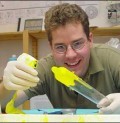 Ultimately, the only truly safe sex is that practised alone or not practiced at all, oh, and perhaps cybersex. However, that said, even these have issues associated with eyesight compromise (allegedly), repetitive strain injury (RSI) and even electrocution in extreme cases of online interactions (you could spill your Mountain Dew on your laptop, after all). And, of course, there are popups, Trojans, packet sniffers and viruses and worms to consider…
Ultimately, the only truly safe sex is that practised alone or not practiced at all, oh, and perhaps cybersex. However, that said, even these have issues associated with eyesight compromise (allegedly), repetitive strain injury (RSI) and even electrocution in extreme cases of online interactions (you could spill your Mountain Dew on your laptop, after all). And, of course, there are popups, Trojans, packet sniffers and viruses and worms to consider…
No matter how realistic the graphics become in Second Life or how good the 3rd party applications in Facebook, however, unless you indulge in direct human to human contact in the offline world, you are not going to catch a sexually transmitted disease, STD. Real-world social networking is, of course, a very real risk factor for STD transmission, according to a new research report in the International Journal of Functional Informatics and Personalised Medicine. This could be especially so given the concept of six five-degrees of separation through which links between individuals are networked by ever short person-to-person-to-person bonds.
According to Courtney Corley and Armin Mikler of the Computational Epidemiology Research Laboratory, at the University of North Texas, computer scientist Diane Cook of Washington State University, in Pullman, and biostatistician Karan Singh of the University of North Texas Health Science Center, in Fort Worth, sexually transmitted diseases and infections are, by definition, transferred among intimate social networks.
They point out that although the way in which various social settings are formed varies considerably between different groups in different places, crucial to the emergence of sexual relationships is obviously a high level of intimacy. They explain that for this reason, modelling the spread of STDs so that medical workers and researchers can better understand, treat and prevent them must be underpinned by social network simulation.
Sexually transmitted diseases and infections are a significant and increasing threat among both developed and developing countries around the world, causing varying degrees of mortality and morbidity in all populations.
Other research has revealed that approximately one in four teens in the United States will contract a sexually transmitted disease (STD) because they fail to use condoms consistently and routinely. The reasons why are well known it seems – partner disapproval and concerns of reduced sexual pleasure.
As such, professionals within the public health industry must be responsible for properly and effectively funding resources, based on predictive models so that STDs can be tamed. If they are not, Corley and colleagues suggest, preventable and curable STDs will ultimately become endemic within the general population.
The team has now developed the Dynamic Social Network of Intimate Contacts (DynSNIC). This program is a simulator that embodies the intimate dynamic and evolving social networks related to the transmission of STDs. They suggest that health professionals will be able to use DynSNIC to develop public health policies and strategies for limiting the spread of STDs, through educational and awareness campaigns.
As a footnote to this research, it occurred to me that researchers must spend an awful lot of time contriving acronyms and abbreviations for their research projects. Take Atlas, one of the experimental setups at the Large Hadron Collider at CERN in Geneva Switzerland. Atlas stands for – “A Toroidal LHC ApparatuS”. So they used an abbreviation within their acronym as well as a noise word – “A” and the last letter of one of the terms. Ludicrous.
But, Atlas is not nearly as silly as the DynSNIC acronym used in Corley’s paper, I’m afraid. Dynamic Social Network of Intimate Contacts, indeed! I thought the whole idea of abbreviating a long research project title was to make it easier to remember and say out lead. DynSNIC, hardly memorable (I is it a y or an I, snic or snick or sink or what. Students will forever struggle with such contrivances. They could’ve just as easily used something like Sexually Transmitted Infections Contact Social Intimate Networks – STICSIN. This would be a double-edged sword that would appeal to both to the religious right and to the scabrous-minded, depending where you put the break (after the Contact or after Social.
Courtney D. Corley, Armin R. Mikler, Diane J. Cook, Karan P. Singh (2008). Dynamic intimate contact social networks and epidemic interventions International Journal of Functional Informatics and Personalised Medicine, 1 (2), 171-188
 Batteries are included (unfortunately) – A chemical cocktail of toxic gases is released when you burn alkaline batteries, according to the latest research from Spain. The investigating team highlights the issue with respect to municipal waste incineration, which is used as an alternative to landfill and suggests that recycling is perhaps the only environmentally viable alternative.
Batteries are included (unfortunately) – A chemical cocktail of toxic gases is released when you burn alkaline batteries, according to the latest research from Spain. The investigating team highlights the issue with respect to municipal waste incineration, which is used as an alternative to landfill and suggests that recycling is perhaps the only environmentally viable alternative. Before reading on, and specifically before asking why I’ve used a picture of Buddha in an article about Ayurveda…it’s not Buddha, it’s Nagarjuna, redactor of the Sushruta Samhita a sixth century BCE text on surgery, the only treatise for two of the eight branches of Ayurveda. The snake is part of Nagarjuna and is usually depicted as a protective canopy, I’ve never seen Buddha depicted in that way. Apologies for any confusion, but please no more comments or emails telling me I’ve used an inappropriate photo. I don’t believe I have.
Before reading on, and specifically before asking why I’ve used a picture of Buddha in an article about Ayurveda…it’s not Buddha, it’s Nagarjuna, redactor of the Sushruta Samhita a sixth century BCE text on surgery, the only treatise for two of the eight branches of Ayurveda. The snake is part of Nagarjuna and is usually depicted as a protective canopy, I’ve never seen Buddha depicted in that way. Apologies for any confusion, but please no more comments or emails telling me I’ve used an inappropriate photo. I don’t believe I have. As a kind of follow-up to my
As a kind of follow-up to my  Ultimately, the only truly safe sex is that practised alone or not practiced at all, oh, and perhaps cybersex. However, that said, even these have issues associated with eyesight compromise (allegedly), repetitive strain injury (RSI) and even electrocution in extreme cases of online interactions (you could spill your Mountain Dew on your laptop, after all). And, of course, there are popups, Trojans, packet sniffers and viruses and worms to consider…
Ultimately, the only truly safe sex is that practised alone or not practiced at all, oh, and perhaps cybersex. However, that said, even these have issues associated with eyesight compromise (allegedly), repetitive strain injury (RSI) and even electrocution in extreme cases of online interactions (you could spill your Mountain Dew on your laptop, after all). And, of course, there are popups, Trojans, packet sniffers and viruses and worms to consider…



 No, it’s not some kind of deviant gorillas in the mist story, apparently, millions of years ago our ancestors picked up pubic lice (crabs) either by sleeping in gorilla nests (without the gorilla) or through eating our silver-backed cousins. David Reed and colleagues at the University of Florida publish details of their findings today in BMC Biology journal.
No, it’s not some kind of deviant gorillas in the mist story, apparently, millions of years ago our ancestors picked up pubic lice (crabs) either by sleeping in gorilla nests (without the gorilla) or through eating our silver-backed cousins. David Reed and colleagues at the University of Florida publish details of their findings today in BMC Biology journal.